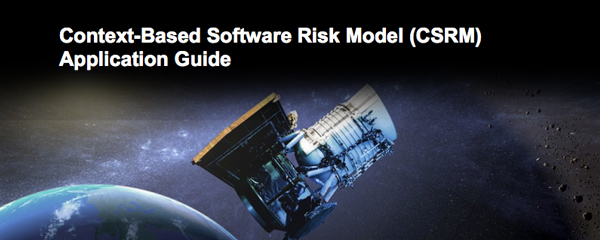NASA Context-Based Software Risk Model Application Guide Published
April 16, 2014
2-minute read

Software is an essential component of practically all modern space systems. Its contribution to the success and safety of space missions is critical, evident by the fact that between the mid-1990s to approximately 2007, a number of NASA, Department of Defense and European Space Agency high-value and high-visibility missions were lost due to software-related malfunctions. In fact, of all high-importance mission losses suffered by NASA in that time period, half were caused by software-related problems, and these were rooted in the software design itself, not the "coding" of the design.
Despite that reality, safety and risk analysts in the Probabilistic Risk Assessment (PRA) technical community still lack analytical tools capable of 1) addressing the proper identification and validation of software functions within a PRA modeling framework and 2) assisting in defining and quantifying the associated risk contributions. This was the motivation for the Office of Safety and Mission Assurance (OSMA)-funded software risk tool documentation and training project, which leveraged previous development and application work performed in conjunction with the former NASA Constellation program.
This project, which also may be viewed as a supplement to Chapter 9, “Software Risk Assessment,” of NASA/SP-2011-3421, “Probabilistic Risk Assessment Procedures Guide for NASA Managers and Practitioners,” consisted of collecting and describing (in application guide-type documents) information on analytical techniques developed and applied to address the aforementioned software risk issues, while producing extensive training materials in presentation formats.
The products of this project include
- Context-Based Software Risk Model (CSRM) Application Guide, NASA-CR-2013-218111, a report that documents and discusses the CSRM technique for developing software-related risk scenarios in a fashion suited for full integration with a traditional PRA framework. The CSRM approach has been specifically conceived and formulated to model and address the risk resulting from potentially mission-impairing software faults and failures that may affect the critical functions of space systems.
- Dynamic Flowgraph Methodology (DFM) Application Guide, a report that documents and discusses the DFM technique, which can be applied to support CSRM software risk scenario analysis and quantification when such scenarios involve more complex and dynamic software functions that are not easily represented and understood through traditional binary event-tree and fault-tree models. The report is undergoing final review for publication in the spring of 2014.
- Production and delivery of an extensive and detailed training course on both the CSRM and DFM methodologies of software risk analysis and assessment. The course is presented in two full days of instruction and consists of 12 one-hour modules. The course was delivered to NASA trainees at the NASA Safety Center (NSC) on Dec. 17 and 18, 2013. The delivery was recorded by the NSC and will be made available in the NASA SATERN online training system.
The NASA point of contact for this information is Dr. Homayoon Dezfuli, OSMA, NASA Headquarters.